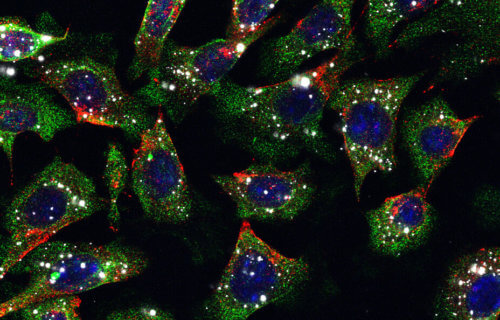NEW HAVEN, Conn. — Could beating skin cancer in the future be as simple as a shot in the arm? Perhaps, according to a team from Yale University. Scientists are developing a skin cancer treatment applied by injecting nanoparticles directly inside tumors. This method could potentially kill cancer cells via a two-pronged approach and hopefully help countless skin cancer patients avoid surgery.
“For a lot of patients, treating skin cancer is much more involved than it would be if there was a way to effectively treat them with a simple procedure like an injection,” says senior study author and Yale Medical School’s vice chair of dermatology Dr. Michael Girardi in a university release. “That’s always been a holy grail in dermatology — to find a simpler way to treat skin cancers such as basal cell carcinoma and squamous cell carcinoma.”
The injections consist of polymer-based nanoparticles infused with a chemotherapy agent. According to the team at Yale, the bio-adhesive nature of the nanoparticles involved is integral to this method’s cancer-killing success. In simpler terms, the nanoparticles are able to latch onto cancer cells long enough to inflict some serious damage.
“When you inject our nanoparticles into a tumor, it turns out that they’re retained within that tumor very well,” explains study co-author Mark Saltzman, the Goizueta Foundation Professor of Biomedical Engineering, Chemical and Environmental Engineering, and professor of physiology. “They accumulate and bind to the tumor matrix, so one single injection lasts for a very long time — the particles stay there and slowly release the compounds. You need that to get rid of the lesion.”
Beating skin cancer with a ‘kill and thrill’ approach
Another critical element to this cancer-fighting approach is pairing the injection with an agent that jumpstarts the immune system.
“I call the phenomenon ‘kill and thrill,'” Girardi adds. “You don’t want to just kill the cells and leave them there, you want to stimulate the immune system to clean up the mess and also react against cells that might not have been killed directly. So it’s a two-pronged attack on the cancer.”
The hope is that, once perfected, this treatment will reduce the need for skin cancer-related surgeries considerably. This would help out patients across a number of areas. Less surgeries means fewer potential surgical complications or wound infections. Moreover, many patients aren’t suitable candidates for surgery in the first place due to other health considerations.
Additionally, this injection strategy would allow patients to target and treat multiple tumors during a single doctor visit.
“In these studies, we did just a single injection, and that’s how we’d like it to work clinically,” Saltzman says. “You go to a dermatologist, they see a lesion and inject into it, and it’s gone and you don’t have to come back.”
Notably, the nanoparticle delivery system allows for the use of particularly strong chemotherapy drugs without the risk of adverse side-effects. Since the nanoparticles, and by extension the chemotherapy drugs, stay attached to tumor cells, there’s a much lower risk of the usual side-effects linked to chemotherapy such as fatigue or hair loss.
The study is published in Proceedings of National Academy of Sciences.
